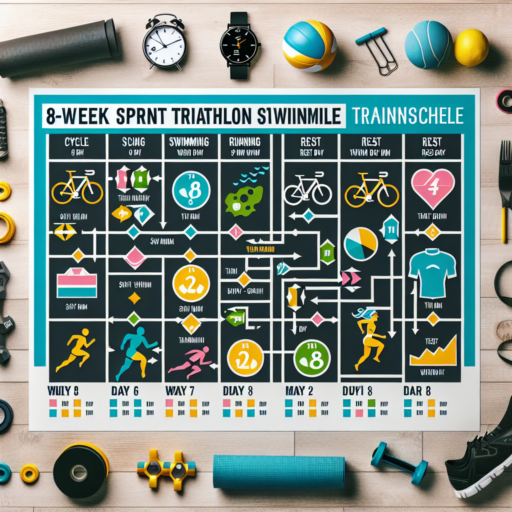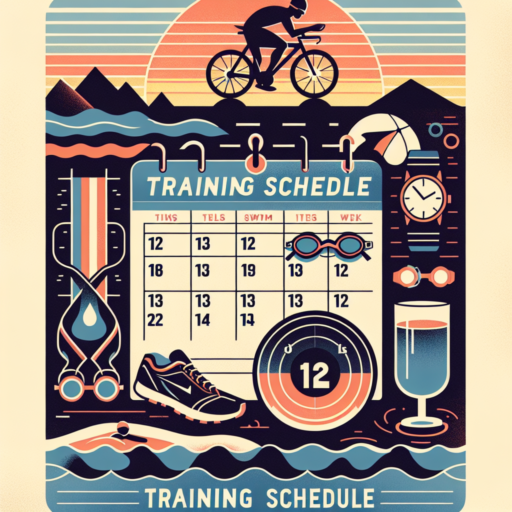How to build a base for triathlon?
Building a strong base for triathlon is essential for both novice and seasoned athletes aiming to enhance their performance across swimming, cycling, and running. The key to a successful triathlon base lies in understanding the importance of balanced, consistent training that develops endurance, strength, and technique across all three disciplines.
Developing Endurance
Endurance is the cornerstone of triathlon success. Athletes should focus on gradually increasing their training volume in each sport, allowing their bodies to adapt to the demands of prolonged physical activity. It’s crucial to strike a balance to prevent overtraining and ensure consistent progress. Incorporating long, slow distance sessions is a proven strategy to enhance cardiovascular efficiency and muscular endurance without overexerting the body.
Building Strength and Flexibility
Strength training is an often overlooked aspect of triathlon base building, yet it is vital for improving performance and reducing injury risk. Targeted exercises designed to build muscle strength and flexibility can lead to more powerful swimming strokes, biking pedaling, and running strides. Including two to three weekly strength training sessions focusing on core stability, leg strength, and upper body resilience can create a well-rounded athlete capable of tackling the complexities of a triathlon.
Technique Improvement
Focusing on technique in the early stages of base building is essential for efficiency across swimming, biking, and running. Enhanced technique not only improves speed but also reduces the energy expenditure required for each discipline. Athletes should consider integrating specific drills and seeking feedback through coaching or video analysis to identify and correct technical flaws. This focus on technique refinement, combined with endurance and strength training, lays a solid foundation for successful triathlon performance.
What is base training triathlon?
Base training for triathlon is a foundational phase in an athlete’s training program designed to build endurance, efficiency, and aerobic capacity. This period, typically lasting several months, focuses on developing a solid aerobic base through consistent, low-intensity exercise sessions across all three triathlon disciplines: swimming, biking, and running. The primary goal during this phase is to prepare the body for the more intense, discipline-specific workouts in later training phases.
During base training, triathletes concentrate on increasing their training volume while maintaining low to moderate intensity. This approach helps in enhancing muscular endurance, improving cardiovascular systems, and increasing the efficiency of the body’s energy systems. Moreover, it is a key time for mastering technique and form in each sport, which can significantly improve performance and reduce the risk of injury when training intensity increases.
Another important aspect of base training is the development of metabolic efficiency. By training at a lower intensity, athletes teach their bodies to utilize fat as a primary fuel source, preserving glycogen stores for higher intensity efforts. This metabolic conditioning is crucial for endurance sports like triathlon, where managing energy efficiently can make a significant difference in performance over long distances.
No se han encontrado productos.
What is the base training for the Olympic triathlon?
The base training for the Olympic triathlon is foundational to an athlete’s success in this demanding sport. This crucial phase focuses on building endurance, strength, and technique across the three disciplines involved: swimming, cycling, and running. The primary goal is to establish a solid fitness platform upon which more specific and intense training can be built as the competition nears.
Base training typically involves a high volume of workouts at a moderate intensity, which lays down the stamina required for the event. For swimming, athletes concentrate on perfecting their strokes and increasing their comfort and efficiency in the water. In terms of cycling, the emphasis is on long rides to build leg strength and endurance, complemented by sessions focused on improving speed and power on the bike. When it comes to running, the training consists of building up mileage gradually to enhance endurance while incorporating drills to improve running form and economy.
Nutrition and recovery are also paramount during this phase, with athletes focusing on a balanced diet to support training loads and sufficient rest, including sleep and active recovery, to allow the body to repair and strengthen. Without a solid base of endurance, strength, and proper recovery protocols, advancing to more specialized triathlon training would be challenging and could lead to injury or burnout.
How many hours a day do triathletes train?
Training for a triathlon is no small feat, and the amount of time dedicated to preparation can vary widely among athletes. Triathletes often commit a significant portion of their day to training, working on their swimming, cycling, and running skills. The exact number of hours dedicated to training each day depends on a myriad of factors including the athlete’s experience level, the distance of the triathlon, and their personal goals.
Factors Influencing Training Hours
- Experience Level: Novice triathletes might start with shorter, more manageable sessions as they build up their stamina and technique, gradually increasing their training time.
- Triathlon Distance: The training regime for a sprint triathlon is significantly different from that of an Ironman, with the latter requiring more extensive daily training sessions.
- Personal Goals: Athletes aiming to podium will likely invest more hours per day in training compared to those participating for personal achievement.
On average, triathletes may train anywhere from 1 to 5 hours per day, balancing their workouts between the three disciplines. It’s crucial for athletes to also factor in rest days to allow for recovery, preventing injuries and ensuring overall well-being. Customizing the training schedule to fit personal capacity and objectives while maintaining a healthy balance with rest and recovery is essential for success in triathlon.




